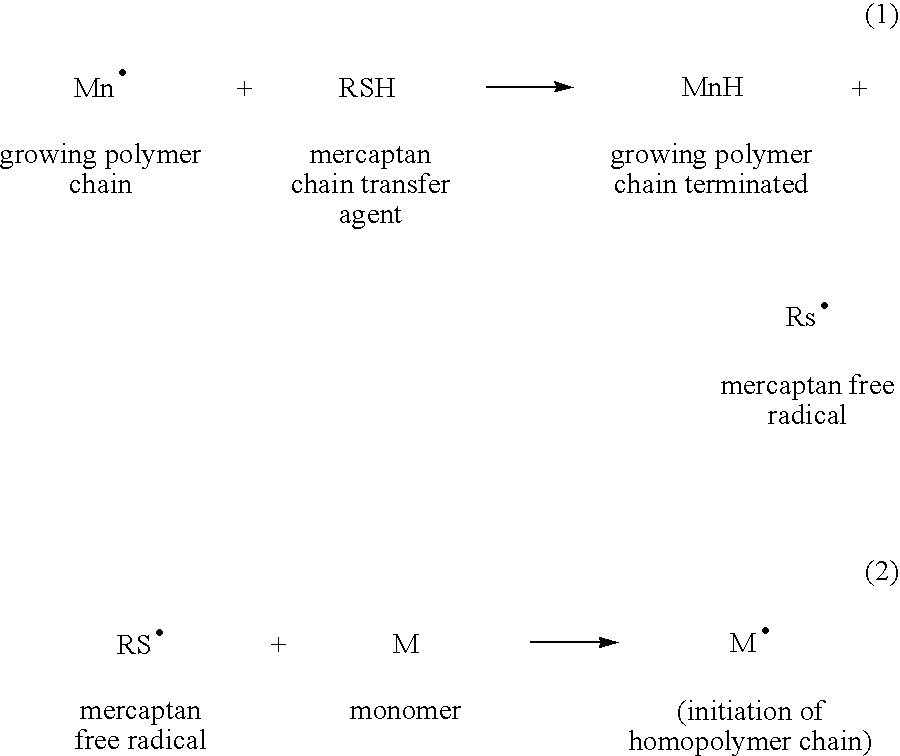Sulfonated graft copolymers
a technology of sulfonated grafts and copolymers, applied in the direction of drilling compositions, chemical instruments and processes, etc., can solve the problems of phase separation, production of ungrafted synthetic homopolymers, etc., and achieve the effect of high degree of natural components, less cost, and performance properties
- Summary
- Abstract
- Description
- Claims
- Application Information
AI Technical Summary
Benefits of technology
Problems solved by technology
Method used
Image
Examples
example 1
[0086]Sulfonated Graft Copolymer with Maltodextrin (a Polysaccharide) (Polymerized without the Use of Mercaptan Chain Transfer Agent)
[0087]156 g of water, 49 g of maltodextrin (Cargill MD™ 01918 maltodextrin, DE 18) and 0.0039 g of ferrous ammonium sulfate hexahydrate (FAS) were heated to 98° C. in a reactor. A mixed solution of 81.6 g of acrylic acid (AA) and 129.2 g of a 50% solution of sodium 2-acrylamido-2-methyl propane sulfonate (AMPS) was added to the reactor over a period of 45 minutes. An initiator solution of 13 g of 35% strength hydrogen peroxide in 78 g of deionized water was simultaneously added to the reactor over a period of 60 minutes. The reaction product was held at 98° C. for an additional hour, neutralized by adding 27.2 g of a 50% solution of sodium hydroxide, and cooled. The final product was a clear yellow solution. The number average molecular weight of this polymer was 68,940 and a pH of 5.1.
[0088]This sample remained a clear solution with no sign of precipi...
example 2
[0090]Example 1 was repeated with the exception that 0.39 g of FAS was used. The final product was a clear amber solution.
example 3
[0091]Sulfonated Graft Copolymer with Maltose at High Levels of Saccharide (85 wt %)
[0092]160 g of water, 207.8 g of Cargill Sweet Satin Maltose (80% solution) and 0.00078 grams of copper sulfate pentahydrate were heated in a reactor to 98° C. A mixed solution containing 16.4 g of AA and 25.9 grams of a 50% solution of sodium 2-acrylamido-2-methyl propane sulfonate (AMPS) was added to the reactor over a period of 45 minutes. The saccharide was 85 weight percent of the total weight of saccharide and monomer (acrylic acid+AMPS). An initiator solution comprising 13 grams of 35% hydrogen peroxide solution in 78 grams of deionized water was simultaneously added to the reactor over a period of 60 minutes. The reaction product was held at 98° C. for an additional hour. The polymer was then neutralized by adding 8 grams of a 50% solution of NaOH. The final product was a clear yellow solution. This sample has been a clear solution and shows no sign of precipitation even after 6 months.
PUM
| Property | Measurement | Unit |
|---|---|---|
| weight percent | aaaaa | aaaaa |
| weight % | aaaaa | aaaaa |
| weight percent | aaaaa | aaaaa |
Abstract
Description
Claims
Application Information
 Login to View More
Login to View More - R&D
- Intellectual Property
- Life Sciences
- Materials
- Tech Scout
- Unparalleled Data Quality
- Higher Quality Content
- 60% Fewer Hallucinations
Browse by: Latest US Patents, China's latest patents, Technical Efficacy Thesaurus, Application Domain, Technology Topic, Popular Technical Reports.
© 2025 PatSnap. All rights reserved.Legal|Privacy policy|Modern Slavery Act Transparency Statement|Sitemap|About US| Contact US: help@patsnap.com

